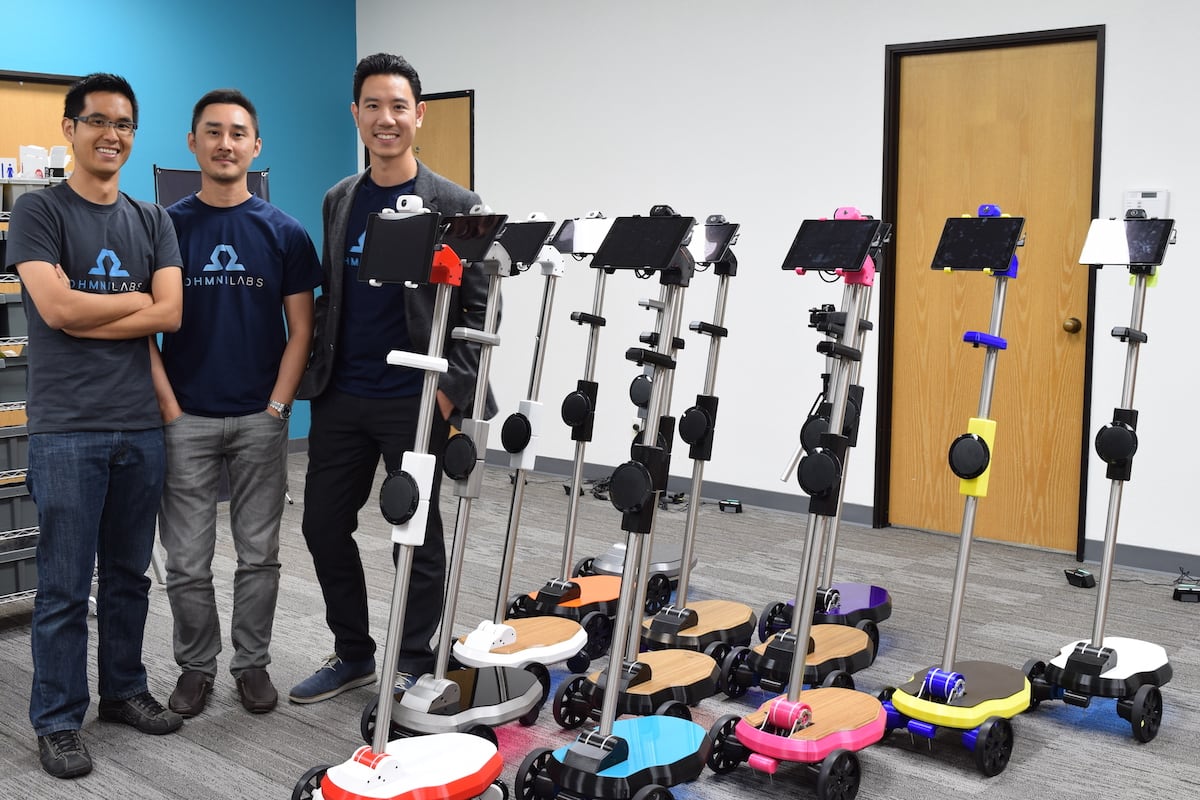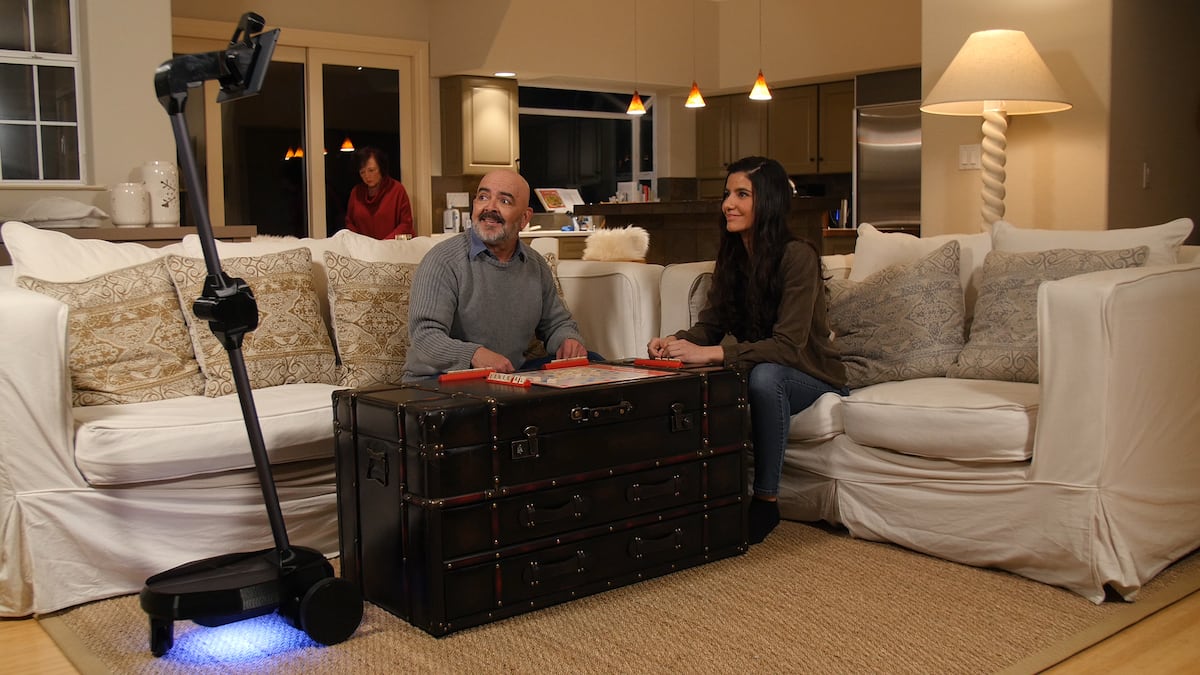“I knew from a young age that I could turn my ideas into real business opportunities.”
Dr. Thuc Vu, a graduate of Carnegie Mellon with a Ph.D. in Computer Science from Stanford University, is at once a serial entrepreneur, an innovator, and an engineer. He founded and co-founded a number of tech companies, including “automatic friend sorter” Katango, which was acquired by Google. He went on to create Tappy.co, a “hyper-local social app” that turns small communities into thriving social networks. The Vietnam-based startup was quickly bought by Weeby.co. Then in 2015, Thuc co-founded Ohmnilabs, a firm dedicated to “reinventing traditional robotics development”. His latest project, Kambria, is a blockchain-based platform that encourages research and design collaboration in the robotics world.
For this installment of our How I Manage series, where we meet with business executives and learn about how they build and manage teams, Thuc shares how he manages startup teams, mixes his interests in business and science, and his commitment to doing work in both the U.S. and Vietnam.

Before we get into the details of management, can you explain to us what Kambria is and how it works?
Sure. I like to compare what we do at Kambria to platforms like Airbnb or Uber. We provide an infrastructure, including a codebase, so that experts can use their skills to meet others’ needs.
Kambria is built on the blockchain, and it’s an open, transparent way for companies and individuals to connect with our engineers. Like the two companies I just mentioned, we’re in the business of bringing people together to mutually benefit, not in the business of owning our own products or property. For example, if McDonald’s wanted to build a particular kind of robot for cooking burgers, they could come to Kambria and offer up a sum of money to the person or team who creates their ideal product. Think of it as a bounty or a prize.
When an organization comes to us with a request, whether it’s for hardware, software, or anything in between, we set up “challenges” on our website. There are usually multiple to choose from at any given time. Anyone can choose to take on a challenge. Engineers usually form teams to work toward building the product. It’s like a hackathon. The best product wins, and that team gets the prize money. The team members decide independently how they divide the earnings.
Summarize your management style.
I try always to empower the people I work with. I try to give them independence in their work so that they can make decisions for themselves and take initiative without my needing to hold their hands.

What do you look for in potential employees?
When I hire, I look for individuals who are self-starters. They need to be creative and flexible enough to adapt to any challenges that come their way. After all, the biggest challenge for startups is the constant uncertainty.
It’s very hard to predict what will happen next. So people need to be able to adapt to situations that are difficult and surprising by coming up with creative solutions.
How does your hiring process work?
Unusually, interviews are rarely the deciding factor when it comes to our hiring decisions. What matters most to me are references from previous employers, both to confirm an applicant has a strong work ethic and to see that they have enough experience in the tech industry.
I don’t hire people that I don’t know. I prefer to ask industry leaders and friends about potential new hires—this is more useful than looking at a resume.
Before we fully invest in employees, we usually have a trial period where they stay with us and work on a small project. That way, we can see what they’re capable of and whether they’re a good fit.
In a startup environment, do you prefer a clear leadership hierarchy or a more egalitarian structure?
My management style is pretty hands-off. Strict hierarchies and lots of structure don’t really suit me. Of course, I have to look at the big picture and come up with long-term goals and new ideas, but I am not one to micromanage the work my team does day-to-day.
That’s why I hire independent and flexible people, people who can collaborate together without needing constant direction.
How do you handle conflict or criticism in the workplace?
Employees are always free to come to me with constructive criticism. It’s mostly about attitude. If someone is not offering advice but simply saying that they do not like some product or procedure, then I can’t do much for them. But if someone thinks I am making a mistake, I want to know why they think so. That doesn’t mean I act on every piece of advice, but I think it’s important to hear people out.
Finally, as for any conflicts or disagreements between employees, I expect them to resolve things independently. My role is not to police their social dynamics, but to set them up for success and, ideally, learn to manage disagreements with maturity.

How do you keep the employees motivated?
The bounty does that for me. It’s a classic incentive, and it works!
You’ve had a busy career from the start. With all that’s going on in your life, how do you unwind after a long day at work?
I meditate daily for about half an hour. It helps me clear my head and remain calm. You should try it! There are apps like Headspace that give beginners instructions on how to meditate.
What is your ideal work environment?
I work best early in the morning or late at night with a mug of Vietnamese oolong tea. I like quiet spaces, which is why I prefer to work when most people are asleep.
Can you share more about your work at robotics startup Ohmnilabs?
Given my fascination with social networks and human connection, my co-founders and I decided to build a product that could help bring people together. We wanted our device to be practical and affordable so that normal people could buy and use it.
A lot of robots on the market today are extremely expensive, difficult for non-tech people to use, or impractical in their functions. We set out to do something different. To cut costs, we build our robots using 3D printing technology. We also have software that tracks the effectiveness of our production techniques so we are constantly improving. Most importantly, we want to keep the Ohmni inexpensive so that more people can benefit from our technology.
How does the Ohmni work? What are some of the things people can do with this technology?
The Ohmni is designed to amplify human connection even when people aren’t physically together. It’s interactive and intuitive, standing at about shoulder or face height and featuring a high-definition iPad-like camera screen. The Ohmni can “walk” around, giving users a more dynamic experience. It even recognizes body movements, like head nods, and reproduces them to make calls extra lifelike.
Healthcare providers can use our robot to connect with patients more often and at a lower cost. Nurses and other hospital staff are overworked so often, but our product saves time and can reduce congestion at medical centers. Because there’s no travel time to or from a hospital or doctor’s office, patients can access their providers instantly in the privacy of their homes. For the elderly, the Ohmni can help combat feelings of isolation by giving them the chance to interact regularly with doctors, family, and caretakers.
Finally, educators can use the Ohmni to give interactive lessons to students who are absent for long periods of time due to injury or illness. Private tutors can do the same, charging less because they aren’t forced to commute.
It becomes easier for schools to host guest lecturers who wouldn’t otherwise be able to visit. The interactivity of our product makes the learning experience far more engaging than simply watching a YouTube video or listening via Skype.

If someone came to you wanting to found a tech startup, what advice would you give them?
Don’t do it. In all seriousness, although I love my work, running a startup is incredibly challenging. Much more so than most people expect.
Finding investors, building a strong team, and perfecting your product can all be difficult for a young company. You need to know what you’re getting yourself into. But there are strategies that make success more likely.
The first thing I would recommend is that you be very frugal. Even if you have one good quarter, you never know what will happen next, and you need to be prepared to handle anything.
Next, don’t be fooled into thinking that lots of company meetings make for better communication. In my opinion, they’re usually a waste of time, and I try to have them only when absolutely necessary. Of course, communication is critical, so I use Slack to bounce ideas off of team members and organize projects. This works really well for us. It’s much more efficient than gathering the whole company in one room and trying to talk about everything at once.
Finally, the founder of LinkedIn has some words of wisdom I always keep in mind: “If you’re not embarrassed about releasing your product, then you’re too late.”
The point is that you need to take risks and innovate quickly, or someone else will do it first. Even if that means delivering a product that flops and embarrasses you, this mindset will help you succeed in the long run.
Related Content:
[Article] Ride-Hailing App TADA’s Blockchain Technology Ecosystem
[Article] Salt Cancer Initiative’s Thuy Muoi Is The Queen Of Startups And The Queen Of Problems
